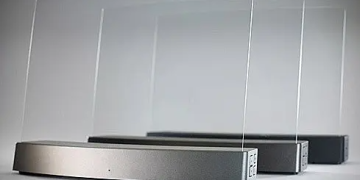In today’s hyperconnected world, the constant barrage of digital information and stimuli can take a toll on our mental and physical well-being. As our reliance on digital devices increases, it’s essential to recognize the importance of taking breaks and disconnecting from technology to recharge and find balance. In this essay, we will explore the concept of digital detox, its benefits, and strategies for incorporating it into our daily lives.
Understanding Digital Overload
The pervasive nature of digital technology has led to a phenomenon known as digital overload, where individuals experience excessive stress and cognitive overload due to constant connectivity. This can manifest in various ways, including increased anxiety, decreased productivity, and disrupted sleep patterns. The relentless stream of notifications and information bombardment can overwhelm our senses and negatively impact our mental health.
Signs of Digital Dependency
Recognizing the signs of digital dependency is the first step towards implementing a digital detox. Symptoms may include compulsively checking smartphones, feeling anxious or restless when without digital devices, and neglecting real-life responsibilities in favor of online activities. Paying attention to these behavioral cues can help individuals identify when they need to take a step back and prioritize their well-being.
Benefits of Digital Detox
Engaging in a digital detox offers a multitude of benefits for both mental and physical health. By disconnecting from digital devices, individuals can experience improved mental clarity, enhanced focus, and reduced stress levels. Additionally, disconnecting from screens can lead to better sleep quality and overall physical health, as excessive screen time has been linked to sleep disturbances and eye strain.
Strategies for Digital Detox
There are several strategies individuals can employ to facilitate a successful digital detox. Setting boundaries and time limits on digital devices can help regulate usage and prevent over-reliance on technology. Additionally, engaging in offline activities such as spending time outdoors, pursuing hobbies, or socializing with friends and family can provide much-needed respite from the digital world.
Mindfulness and Meditation
Practicing mindfulness and meditation can be powerful tools for reducing screen time and promoting mental well-being. Mindfulness techniques, such as deep breathing exercises and mindful awareness of thoughts and feelings, can help individuals cultivate awareness and detachment from digital distractions. Similarly, incorporating meditation into daily routines can promote relaxation, stress reduction, and emotional balance.
Cultivating Digital Minimalism
Digital minimalism involves simplifying digital environments and decluttering online spaces to reduce digital distractions and increase focus. This may involve unsubscribing from unnecessary emails, organizing digital files and folders, and minimizing app notifications. By adopting minimalist technology habits, individuals can streamline their digital experiences and reclaim control over their digital lives.
Disconnecting to Reconnect
In today’s hyperconnected world, it’s easy to prioritize digital connections over real-life relationships. However, fostering meaningful connections offline is essential for overall well-being. Whether it’s spending quality time with loved ones, engaging in face-to-face conversations, or participating in community activities, disconnecting from screens allows individuals to reconnect with themselves and others on a deeper level.
Overcoming Challenges
While embarking on a digital detox can be beneficial, it may also come with challenges such as FOMO (fear of missing out) and withdrawal symptoms. It’s important for individuals to acknowledge these challenges and develop strategies for managing them effectively. This may involve practicing self-compassion, seeking support from others, and gradually easing into a digital detox routine.
Incorporating Digital Wellness Practices
Balancing digital engagement with self-care activities is crucial for maintaining overall well-being in a digital-centric world. Individuals can prioritize mental and emotional wellness by incorporating practices such as exercise, journaling, and creative expression into their daily routines. By fostering a holistic approach to wellness, individuals can mitigate the negative effects of excessive screen time and cultivate a healthy relationship with technology.
Tracking Progress and Accountability
Utilizing apps and tools to monitor screen time and digital habits can provide valuable insights into usage patterns and behaviors. Tracking progress towards digital detox goals can help individuals stay accountable and motivated to make positive changes. Additionally, seeking support from friends, family, or professional resources can provide encouragement and guidance throughout the detox process.
Sustainable Digital Habits
Establishing long-term strategies for maintaining digital balance is essential for sustained well-being. Rather than viewing a digital detox as a temporary fix, individuals should strive to cultivate sustainable habits that promote a healthy relationship with technology. This may involve setting realistic goals, practicing self-discipline, and periodically reassessing digital habits to ensure they align with overall wellness goals.
Conclusion
In conclusion, digital detox offers a valuable opportunity to disconnect from technology and prioritize mental and physical well-being in a hyperconnected world. By understanding the signs of digital overload, implementing strategies for digital detox, and cultivating sustainable digital habits, individuals can find balance and reclaim control over their digital lives.

FAQs After The Conclusion
1. What is a digital detox?
A digital detox involves taking a break from digital devices and online activities to reduce stress, improve mental clarity, and promote overall well-being.
2. What are the benefits of a digital detox?
Benefits of a digital detox include improved mental clarity, enhanced focus, reduced stress levels, better sleep quality, and increased physical health.
3. How can I know if I need a digital detox?
Signs that you may need a digital detox include compulsively checking smartphones, feeling anxious or restless without digital devices, and neglecting real-life responsibilities due to online activities.
4. What are some strategies for implementing a successful digital detox?
Strategies for a successful digital detox include setting boundaries and time limits on digital devices, engaging in offline activities and hobbies, practicing mindfulness and meditation, and cultivating digital minimalism.
5. How can I overcome challenges during a digital detox?
To overcome challenges during a digital detox, it’s important to acknowledge and address feelings of FOMO and withdrawal symptoms, practice self-compassion, seek support from others, and gradually ease into a detox routine.
6. What role does mindfulness play in a digital detox?
Mindfulness techniques can help individuals reduce screen time, promote awareness and detachment from digital distractions, and enhance relaxation and stress reduction during a digital detox.
7. How can I maintain digital balance in the long term?
To maintain digital balance in the long term, it’s important to establish sustainable habits, set realistic goals, practice self-discipline, periodically reassess digital habits, and prioritize overall wellness.
8. How can I track my progress during a digital detox?
You can track your progress during a digital detox by utilizing apps and tools to monitor screen time and digital habits, setting goals, and seeking accountability from friends, family, or professional resources.
















